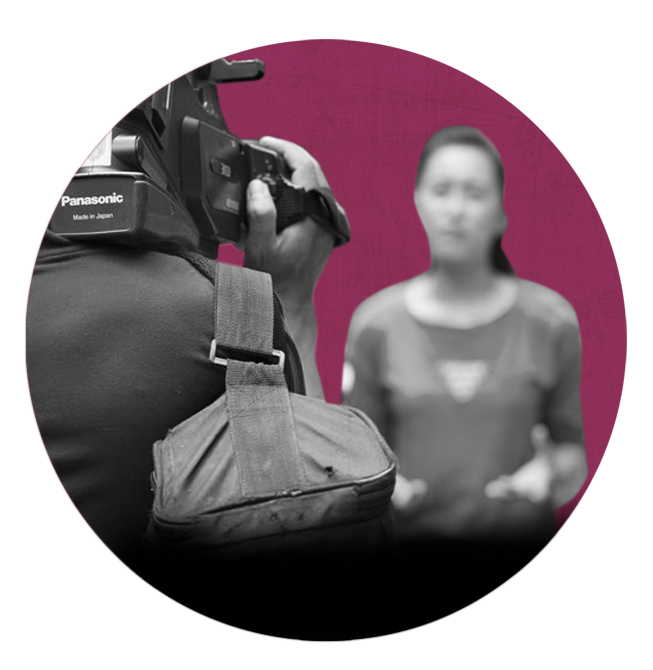
Stories of Gender Justice
from Women Journalists
across the Asia-Pacific Region
Through the tip of their pen
This Journal tells the personal stories of ten women journalists from across the Asia and Pacific region. Their stories reflect what it means being a woman journalist in the region today, what it is like reporting on gender and justice issues from their countries, and the barriers they have overcome.
Among deeply personal stories, you will read about how an online hate campaign against one woman journalist almost stopped her from writing, how another is tackling patriarchal mindsets in the media industry, and the social consequences another faced when her investigative reporting uncovered deeply entrenched gender stereotypes. Altogether, the journalists are demonstrating that journalism is more than a job – it is a calling.
While the contributors to this Journal are from different backgrounds and have unique experiences, they all emphasize the need for greater support of women in the media industry. This Journal supports the next generation of women journalists standing up for just and equitable societies.
DELVE INTO THE EXTRACTS FROM WOMEN JOURNALISTS IN-DEPTH INSIGHTS ON GENDER JUSTICE IN ASIA AND THE PACIFIC
01 AFGHANISTAN
Despite Taliban assurances that press freedom would be respected and women journalists would be allowed to keep working, a new media landscape is emerging from which women are missing.
After 15 August 2021, only 20 out of 114 newspapers continued to publish; 51 TV stations, 132 radio stations and 49 online media outlets ceased operations; and 72 per cent of journalists who lost their jobs are women. (International Federation of Journalists).
What does it mean to be a woman and a journalist in Afghanistan?
In the words of Afghan Journalist, Zuhal Ahad
Although women make up only a small percentage of journalists working in Afghanistan, women represent 50 per cent of the journalists murdered there. Despite knowing that their job has long put them at risk of being targeted, kidnapped or killed, women journalists in Afghanistan continue to work to get the voices of the Afghan people out.
With the Taliban’s August 2021 return, the situation for journalists got worse and more brutal. Many well-known women journalists escaped from the country—those who remained and continued working live in an unimaginably bad situation. Almost immediately, the Taliban enforced restrictions on women.
“You are a privately-owned radio station. You can continue, but without any woman’s voice and without music.”
Taliban representative to a woman journalist working for a radio station, two days after the Taliban took control.
During the past three years, I have primarily reported on the gendered impacts of the war and on women’s human rights, inequality and violence against women. In doing so, I have faced threats and harassment.
Furthermore, the overwhelming male dominance that permeates Afghanistan makes reporting on women’s rights and gender equality challenging. Beyond the sociocultural barriers that women reporters face in the newsroom and in the field, it is very difficult to find and convince women to share their stories.
A woman’s place in Afghanistan has returned to a silent place, without education, without work and without a voice.
For now, journalists everywhere must do their best to report on the stories and the life situation of women in Afghanistan. Afghan women are resilient and have proven time and time again that they will fight for their rights. Afghan women journalists will continue to raise the voices of the oppressed and will one day be back to running newsrooms and media outlets in Afghanistan.
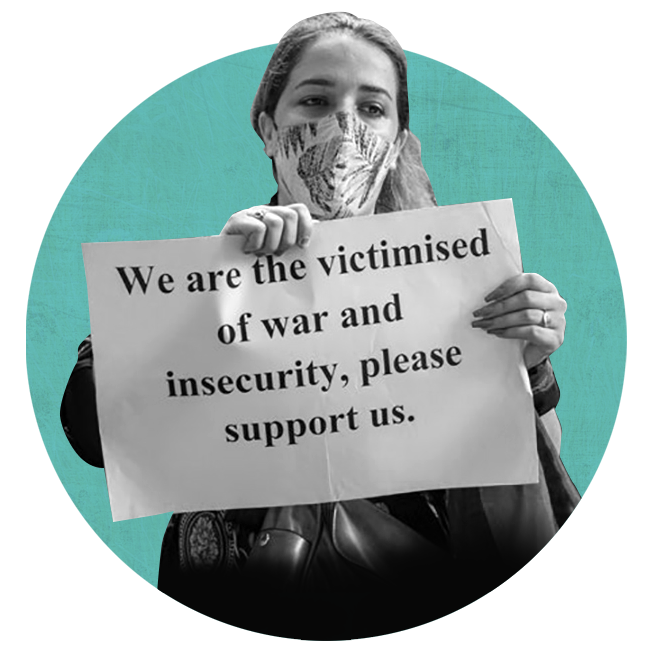
40
OUT OF THE 25 MILLION PEOPLE TRAPPED IN FORCED LABOUR:
16
5
4
Women journalists cannot be silenced
In the words of Bangladeshi journalist, Banani Mallick
In Bangladesh’s sociocultural context, the scope and opportunities for women to work as journalists are quickly shrinking. This is happening mainly due to a growing influence of negative patriarchal power. Misogyny, toxic work environments and extremism are amplifying patriarchal intolerance of women in the field of journalism. Mounting communal attitudes and conventional superstitions are creating additional barriers for women to enter and thrive in this sector.
I have witnessed patriarchal power in almost every sphere of life, ranging from my social upbringing and education to societal norms. I have seen the negative influence of patriarchy on society and its institutions and wish for it to be replaced with the values of empathy, human life and well-being.
Wipe out patriarchal power to establish a media paradigm that ensures gender justice and women’s rights
Patriarchal norms are particularly visible and challenging for women journalists from minority communities. Consider my case, for instance. As a Hindu, I am a member of a minority community. As a woman, I have endured many struggles in moving my career forward because of patriarchal powers threatening my professional existence. Our male colleagues are not prepared to recognize that their female colleagues’ work is equal to theirs — or even better.
Numerous male colleagues have made my career difficult by harassing and stalking me, both inside and outside the office. In 2017, a number of my male colleagues conspired to damage my reputation by branding me as a woman of low morals and questionable character. I have witnessed many offensive acts directed at women journalists, especially after male colleagues have recognized our potential and learned that we are outspoken about gender and women’s rights issues.
There is a need for training and discussions on gender-related issues in media outlets, targeting colleagues from top to bottom. I think it will help us to have gender-friendly people around us and to remove threats to freedom of expression that prevents journalists from delivering true and fearless journalism.
Maintaining the civic space through journalism
In the words of Indian journalist, Siddhi Shah
It is time to see women’s and men’s roles as existing under one spectrum rather than as existing in separate spheres. When girls are born in India, they are automatically burdened with responsibilities and expectations of what they are supposed to be like. In a progressive world, questions arise of what perpetuates misogyny and unjust gender practices?
In my writing asa young, aspiring journalist, I have had to overcome a number of hurdles when expressing my thoughts on sensitive issues. In a country like India, entrenched with values, customs and many conservative traditions, I have always had to be mindful of what I wrote in order to avoid offending community, personal or societal values. Given the veritable epidemic of online hate against women, I was quite wary of triggering a backlash.
With this in mind, I looked around and noticed the same trend with my peers – increasing avoidance of certain topics out of fear that doing so could trigger violence. Unfortunately, the shrinking civic space and backlash are starting to wear us down.
Journalists have a responsibility to spotlight even the most sensitive issues when the issues result from injustice. Women journalists often give the voiceless a voice, access segments of society that are largely out of sight and break down stereotypes and cultural barriers that undermine gender equality.
More must be done to push back against the shrinking civic space in which journalists operate. Without strong policies and laws that promote and protect the rights of freedom of expression (and protect women journalists), we risk living in a society that perpetually self-censors, stifles critical thinking and undermines democratic participation.

FREEDOM OF THE PRESS WORLDWIDE 2021
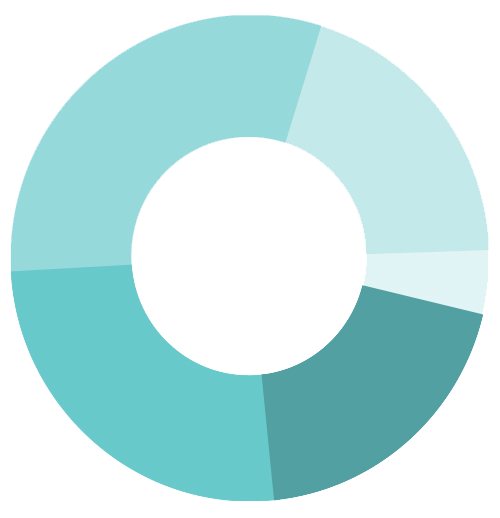
Press as a pillar of democracy
In the words of Indonesian journalist, Betty Herlina Anwar
It took me a decade to grow from a journalist who supported patriarchal views to a journalist who promotes gender perspectives and women’s empowerment.
Ten years into my career, I joined a journalist organization and began to see things differently. I interacted with many other women journalists, feminists and victims of the patriarchy. I began to see that the media must be held accountable for perpetuating the patriarchy, which has disadvantaged women in many ways. I learned that the road to a society free of gender bias is full of hurdles. I also learned that as a journalist, I could do something about it.
In Indonesia, it is said that the press is the fourth pillar of democracy. Adding to that, Law No. 40/1999 on the Press states that the press serves as a medium for information, education, entertainment and social control. Thus, the media needs to be impartial in its reporting.
The long road to journalism free of gender bias
Mass media has a great role to play in challenging the status quo. For example, before deploying new reporters to the field, media companies should train and equip them with the necessary understanding of women’s rights and should encourage journalists to incorporate gender-sensitive perspectives into their work. The media should use more female sources when writing news, appreciate women’s achievements irrespective of their physical appearance and should not portray women in sexist perspectives. Furthermore, the male-dominated media industry must commit to reforming itself toward gender equality and diversity.
Through the tip of their pen, women journalists have the power to draw policymakers’ and other influential actors’ attention to women’s rights. Women journalists are powerful journalists, and they, together with their male journalist allies, are on the front line in the fight for gender equality.
05 PAKISTAN
For women in the public eye, including women journalists, the risks of being targeted are extreme — women journalists are targeted online significantly more than their male colleagues. The threats women journalists face are highly sexualized and often focus on their physical features, ethnicity or cultural background.
Safety of women in public and private domains
Writing on gender and women’s rights has always been difficult to do in Pakistan, especially in the 1990s. It attracts criticism and hate from readers who see it as a threat to their customs and traditions, which are mostly rooted in patriarchy.
Another problem is that gender topics are largely restricted to the ‘women’s pages/sections.’ Although many women work in the media, gender is still considered a ‘soft’ beat; most gender stories are used as fillers on slow news days. As reflected in Pakistan’s media, gender issues and minority rights are not given priority. It is almost as if they fall within society’s blind spot and so remain under-reported.
Then on a cold morning in January 2018, the body of six-year-old Zainab was discovered on a pile of garbage. Within hours of her murder being reported, traditional and social media blew up with images of her lifeless body. Unethical as the sharing of images of a child’s body was, it revealed the brutality of the crime— they showed people that she was not only raped and murdered, but tossed onto a pile of rubbish.
Zainab’s rape was among the first times rape was discussed in the media and offline. Even those who had always claimed that crimes like rape don’t occur in Islamic society were forced to change their view as images of her small body were seared into their memories. As expected, the media hype eventually died down — until next time.
While Pakistan has several laws that protect women, they are not enough to change things. Gender-based violence and harassment are still widespread, and many in the media lack the skills to report on gender and justice. They need training on how to report on important and sensitive topics and keep themselves up to date on national and international laws and rights.
Although I have tried my best and have covered issues such as the parallel judicial system, child, early and forced marriage, women’s rights, marital and divorce rights, domestic abuse, and laws that protect women, more needs to be done. The media needs to publish more stories related to gender and editors need to ensure that gender stories are not restricted to a particular time slot or page and that the stories are covered widely.
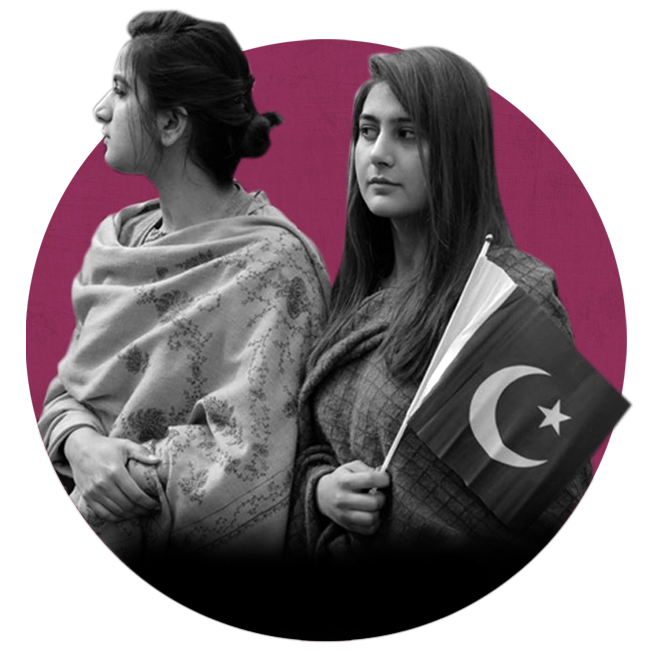
06 PHILIPPINES
Over the past 15 years, there has been a marked increase in cyber harassment, making the safety of women journalists a major issue for reporting in today’s digital era.
“Journalists and human rights defenders play an indispensable role in our societies, and when they are silenced, we all suffer”
– UN High Commissioner for Human Rights Michelle Bachelet.
A 2020 SURVEY WITH
714 WOMEN JOURNALISTS FROM
125 COUNTRIES REVEALED
73
Cybersecurity, gender and journalism
In the words of Filipina journalist, Regina Cabato
I deactivated my Facebook account for the first time in around ten years last June. There was no love lost; it had long been a toxic environment. The last straw was a string of harmful events: a hacking scare, a data breach, harassment campaigns and an influx of unsolicited friend requests from strangers.
I live and work in the Philippines. Like many of my colleagues, I have found myself on the receiving end of coordinated attacks. I have experienced two hate campaigns over the course of the pandemic, one triggered by a report I wrote on a Twitter takedown of inauthentic accounts and the other because of my tweet about hospitals in Manila reaching full capacity. Blogger-propagandists and their followers flooded me with spam and tagged me in threats.
The Philippines is consistently listed as one of the most dangerous countries in the world for journalists. Recent developments have sunk its press freedom ranking even more; a major broadcaster was shut down, and a barrage of cases have been filed against Nobel Peace Prizewinning-journalist Maria Ressa.
Without cybersecurity and women journalists,
the truth is patient zero
According to a Pulse Asia estimate, almost 99 per cent of the online Philippine population uses Facebook. As one of the top sources of information in the country, the spread of disinformation and misinformation on the platform has been credited with helping people secure power. The proliferation of troll farms and influencers peddling propaganda has made the country the post-truth era’s patient zero.
While on- and offline harassment does not exclusively affect women, there is a worrying trend of people espousing misogynistic hate towards women media professionals. Online attacks against women are particularly vile. They tend to take on a sexual nature or gendered cursing, like when journalists are called ‘presstitutes’. Human rights advocates, analysts and journalists alike have called on social media platforms to step up and double down on disinformation and hate speech against women.
There must be accountability. I refuse to resign myself to a future where women journalists being harassed and attacked is the norm.
07 SRI LANKA
The media industry is a reflection of society and its different communities. Because it plays an important role in shaping opinions and values, journalists have the power to contribute to positive social norms change. For the LGBTQI+ community, fair and accurate reporting on their lives and experiences is an important step toward realizing LGBTQI+ people’s rights.
STATES WHERE IT’S LEGAL BEING AN LGBTQI+PERSON
Being an LGBTQI+ person is only legal in 28 out of 49 states in the Asia-Pacific region. Without legal change on the acceptance and protection ofLGBTQI+ people, they will continue to face stigma, exclusion and human rights abuses.
How media can change public perception
In the words of SriLankan journalist, Nirasha Piyawadani
“Oh, I can not come to present the programme today. Guys will bully me, call me a butterfly. They will think you’re a lesbian because you’re not married.”
The male journalist and I had planned to jointly conduct a live interview of a social activist who speaks out on behalf of the LGBTQI+ community. Although the interview was structured around including both our perspectives, I had to do it myself after he refused to take part in the programme.
Enabling LGBTQI+ voices to be heard is gaining increasing attention in Sri Lanka, including among young journalists and mainstream media institutions. However, journalists are still exposed to the possibility of social stigma when reporting on the LGBTQI+ community, just as they are when reporting on groups such as sex workers and other marginalized communities. This outlook prevails because there is no proper education on what marginalized communities are, how they are treated in society or how their human rights are being violated.
They will think you’re a lesbian because you’re not married
This is not the first time I confronted such a situation when reporting on gender and justice issues;I encountered a similar situation in 2016 while researching sex workers’HIV-related health issues.
I was meeting with a woman who used to be a sex worker. She did not want to be interviewed in her neighbourhood because the owners of her house and her neighbours were unaware of her past, and she wanted to keep it that way. So I invited her to my house instead. A close relation of mine said — with great hatred — that I had recognized, associated with, and invited to my home a sex worker, not because I was a journalist but because he suspected that I was also involved in the profession. His opinion was bolstered by the fact that I speak positively of the view that sex work should be legalized. I tried to explain to him that I think legalizing sex work is good because it protects the basic human rights of sex workers and gives them control over the social injustices and health problems they face. He still continued insulting me.
Despite these experiences, I do think that Sri Lanka has a bright future ahead. With commitments and efforts put forth by organizations and activists, the country is gradually embracing marginalized communities. There are also government attempts to incorporate human rights education into the education system.
Some will ask whether such education will result in journalists becoming human rights activists. I would answer “yes,” because at least indirectly, journalists are human rights defenders with a professional responsibility to report on human rights abuses.
08 VIET NAM
Women journalists are often the first to uncover stories of discrimination, inequality and exclusion. They ensure a multiplicity of voices are represented, reaching those most marginalised by society. At the forefront of changing social norms on gender and building just and inclusive societies, women journalists are committed to shining a light on issues of social justice.
Women journalists for social justice
Some of the best journalism in Vietnam today can be found in its coverage of social inequality, much of which has been spearheaded by local women journalists. At the forefront is Phụ nữ Việt Nam, the Vietnamese Women’s Newspaper whose editorial team is made up entirely of women. Established in 1948 in support of the Vietnamese Women’s Union, the newspaper has grown in terms of its content and coverage.
Press coverage has been instrumental in helping shift public opinion thanks to, in many cases, the dogged determination of women journalists who have helped raise awareness about the scale of the problem.
LGBTQI+ issues are today well-covered in the national press. The Ho Chi Minh’s branch of Phụ nữ ViệtNam regularly publishes a relationship advice column penned by Mia Nguyễn, a woman counsellor and sexual behaviour lecturer who was born male. Her regular appearance in a mainstream publication is just one example of how the presence of LGBTQI+ people has been accepted in Vietnamese society (especially in urban areas). For the LGBTQI+ community, women journalists have changed social norms, allowing them to be active citizens and empowering them to promote and protect their human rights.
However, the coverage of environmental issues does not share the same media freedom as the exploration of gender identity — not even in a newspaper as popular as Phụ nữ Việt Nam. In 2020, the online version of the newspaper reported on the environmental devastation of two protected areas by a corporation. Punishment followed — the online newspaper was temporarily shut down for spreading “false information,” the investigating reporters were monitored, pressured and intimidated, and editor Trang Thu Nguyễn, who stood by her journalists and refused to distance herself from the exposé, was forced out of her job (just a year earlier, Forbes magazine had named Nguyễn one of Viet Nam’s 100 most powerful women).
Perhaps it is because women journalists are often among the first to report on social inequality that they are also targeted. Viet Nam’s #MeToo movement was kick-started by the story of an intern at a leading newspaper who attempted suicide after being raped by her editor. Rape convictions are rare in Viet Nam, with allegations not taken seriously unless there is clear evidence of resistance (physical injury is needed to prove the encounter was non-consensual). Women journalists who choose to speak out are penalized for their decision, as one journalist discovered when her Facebook account was blocked after she had used it to comment on her own experiences of newsroom harassment.
Women journalists providing a critical eye on social inequality and pushing the boundaries of freedom of expression in VietNam hold these words close and will continue to tell the stories of the diverse people of Viet Nam and investigate and report on issues of social inequality.
